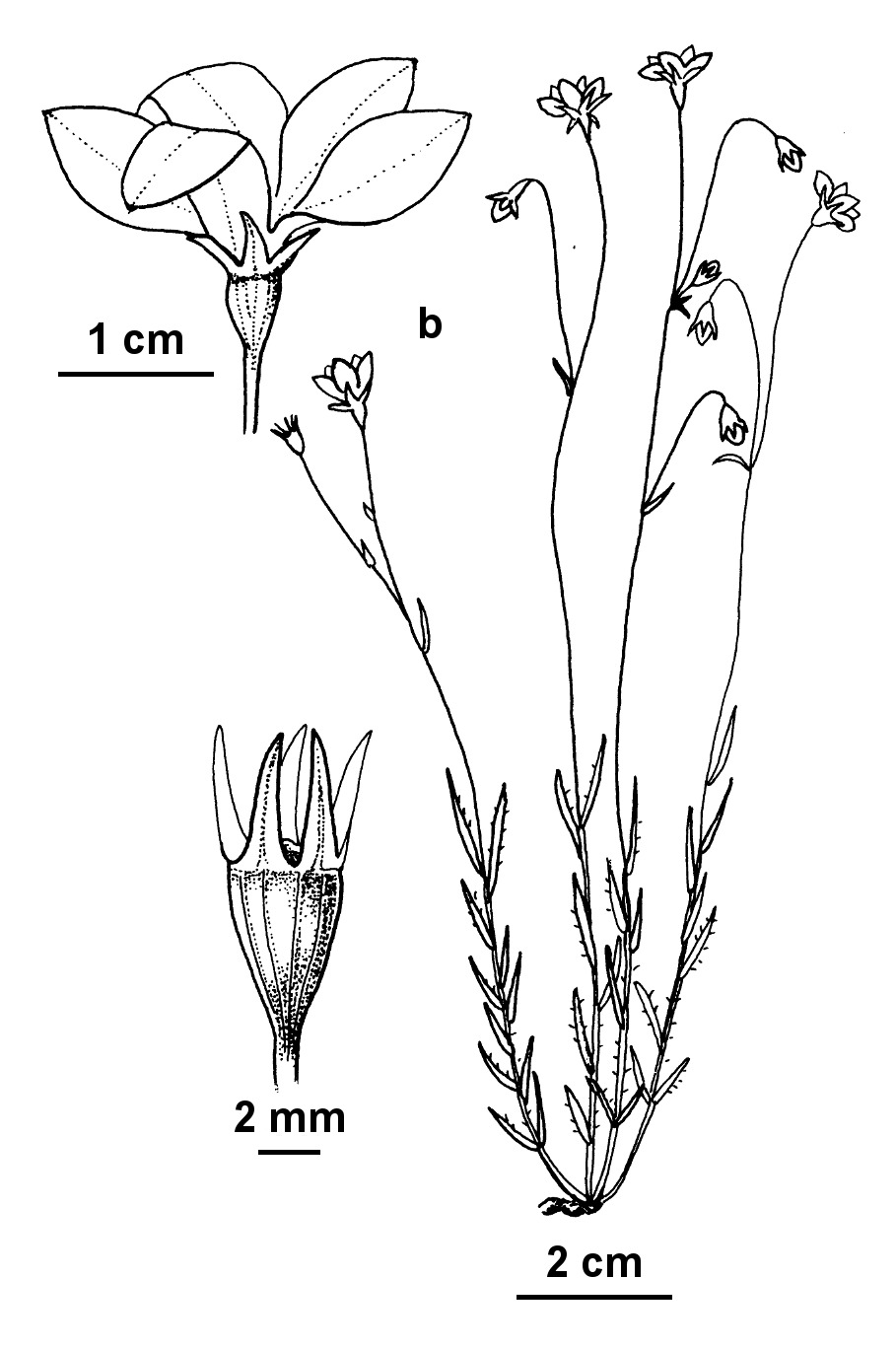Wahlenbergia planiflora subsp. planiflora
Tufted perennial, usually few-stemmed from a thickened taproot, glabrous throughout, or hirsute near base; stems erect or ascending, 12–65 cm long, 2–many-branched, usually with some leaves in upper half; leaves alternate, or the lower ones opposite, narrowly obovate or oblanceolate near base, often c. linear above, 5–50 mm long, 1–10 mm wide; margins entire, or with small callus-teeth, sometimes undulate. Hypanthium c. goblet-shaped or obconical, 2–4 mm long, glabrous; calyx-lobes spreading, narrow-triangular, 2–5 mm long, glabrous; corolla rotate, (usually pale) blue, tube 1–3 mm long, shorter than or subequal to calyx-lobes, lobes c. elliptic, 6–13 mm long, 3.5–7 mm wide, obtuse to acute, widely spreading; style 3–5.5 mm long, strongly constricted in upper third, lobes 3, ovate. Capsule hemispherical to obconical, 3–8 mm long, 2–5 mm wide. Flowers Oct.–Jan.
VRiv, GipP, Gold, CVU, GGr, DunT, HNF, VAlp. Also NSW, ACT. Apparently rare in Victoria, where known by a few collections from elevated sites in the east (Cobberas, Nunniong Plateau, Cudgewa), and from lower altitude near Rutherglen.
Very close to Wahlenbergia fluminalis which it appears to replace in eastern Victoria. Specimens from north-central Victoria (e.g. Echuca to Wangaratta) may be difficult to place with certainty.
Walsh, N.G. (1999). Wahlenbergia. In: Walsh, N.G.; Entwisle, T.J., Flora of Victoria Vol. 4, Cornaceae to Asteraceae, pp. 554–563. Inkata Press, Melbourne.
 Spinning
Spinning
